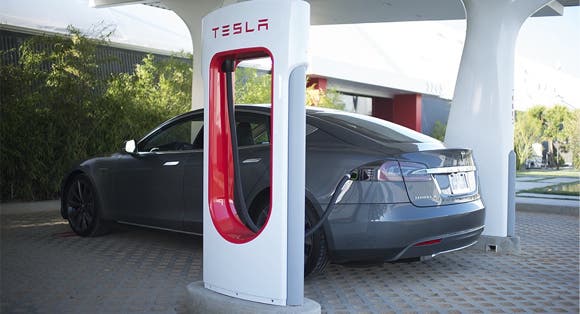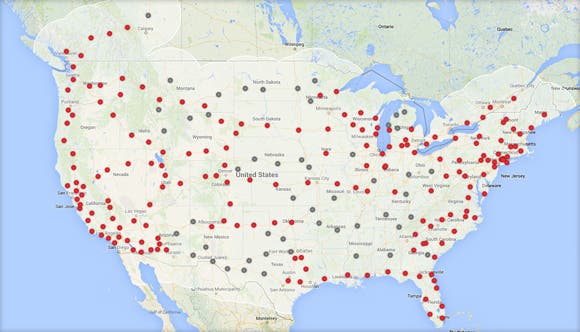
A lot of Americans are buying into the electric car dream. As noble as this may be, despite the fact that EVs are far from being pure ‘green’, there are numerous challenges faced by the industry which have deterred a lot of folks from switching to electric cars such as the one offered by Tesla Motors. One such big issue is charging on the road. You can travel anywhere in the US and be sure that you’re within an hour tops from a gas station. Elon Musk, Tesla founder and CEO, aims to reach the same kind of practicability conventional internal combustion vehicles offer. A first obvious step is to open charging service stations through out the country.
Tesla is expanding furiously in this direction, not being willing to take chances and wait for this kind of infrastructure to build itself. Recently, the company announced the opening of the West Coast Supercharger Corridor, energizing a network of stations that enable Model S owners to travel for free between San Diego, California and Vancouver, British Columbia. Tesla owners are thus no farther than 200 miles from a charging station.
[RELATED] New York is planning wireless charging manholes for electric cars
Here’s the gist though, because people are weird and not always rational. Most people will drive as a year to year average no more than 40 miles each day, mostly on commutes. You’ll often hear arguments like “What if I decide to drive 500 miles north to see a horse race?”. Have you ever seen a horse race or drove for more than 500 miles? “No”. This is what people in the EV industry call an anticipatory objection. People might only drive a couple times a year more than 200 miles, but that doesn’t stop them for imagining a long-shot perspective in the future which greatly influences their buying decision. Couple this with having to stop and charge about one hour ever 150-200 miles or so and you’ve got yourself quite the hurdle. Tesla is addressing all of these issues.

Tesla Superchargers are substantially more powerful than any other charging technology in the world, capable of charging Model S 20x faster than most public charging stations. Superchargers deliver up to 120 kW DC (Direct Current) power directly to the Model S battery, providing half a charge in as little as 20 minutes, according to their statement. By 2015, Musk wants to have service stations that provide fast charging for as many as 10 cars at a time littered all over the country and to demonstrate his concept, he plans on traveling cross-country in a Tesla Model S with his kids.
Even so, for 200 miles worth of travel estimated by Tesla at 80% battery worth or at least 40 minutes of charging time this adds up to at least nine hours of dead time in his 3,200-mile trek. Tesla is sexy, powerful, clean even in some environmental respects, however let’s not kid ourselves you’re not going to convince anyone with these charging times. Here’s what brilliant marketing and engineering meet , though.
Across all Tesla service stations Model S owners can charge for free. Need to charge and fly? No problem, then you swap your empty battery for a full one at a nominal fee. During a PR event sometime ago, two Tesla batteries were replaced in less time than it took to refuel an Audi at a gas station. This kind of servicing tech is set to be rolled out this winter and will cost somewhere between $60 to $80 or the equivalent of 15 gallons worth of gas. The message is clear: you’re a Tesla client, in other words you’re an innovator who wants to make a contribution to saving the world, so you get your charging free; you’re in hurry, so here’s this solution.
The whole idea is eliminating all the hassles associated with EV to the point that it becomes common sense to buy one instead of a internal combustion engine. If Musk pull this off, well… he has nothing left to prove anymore.






